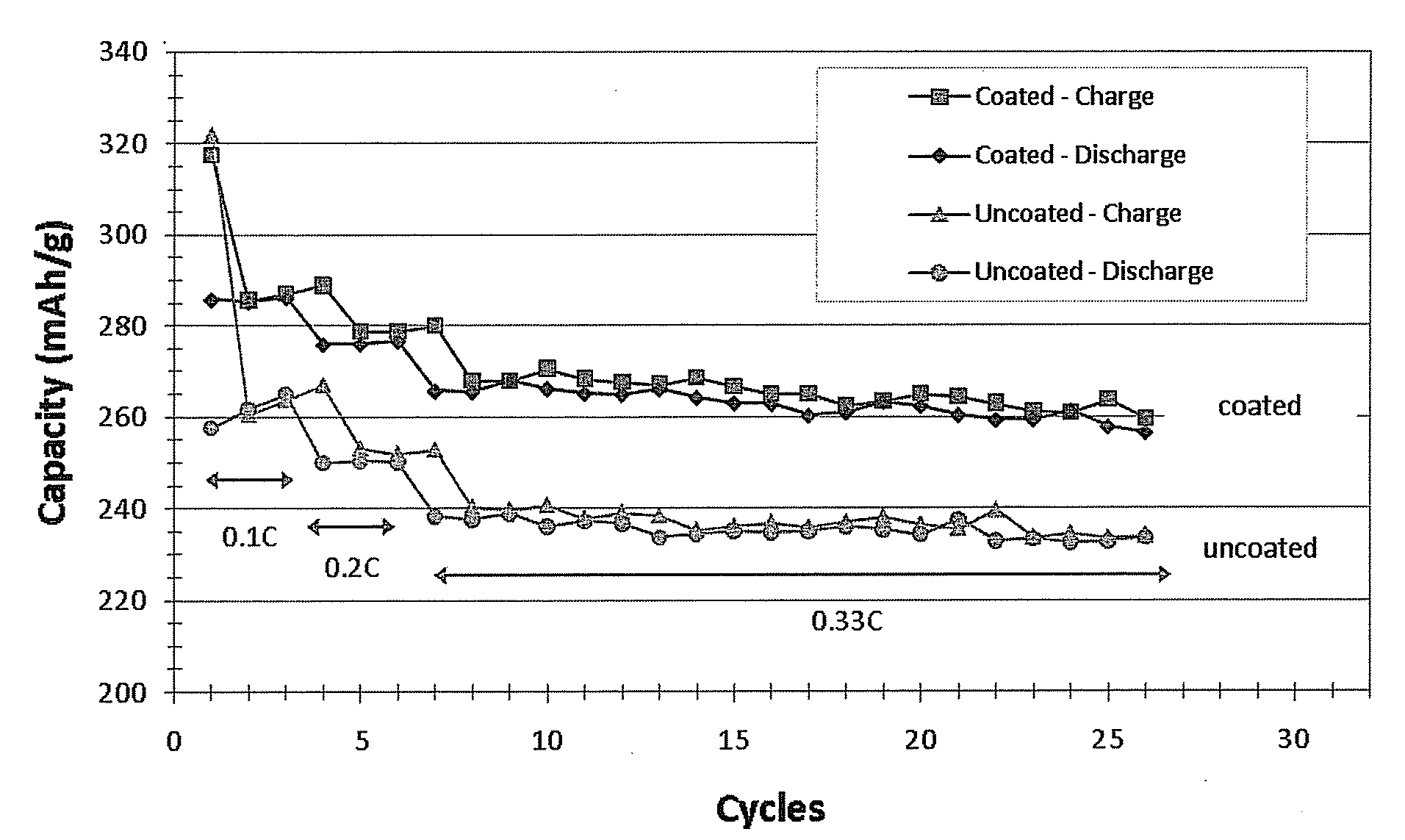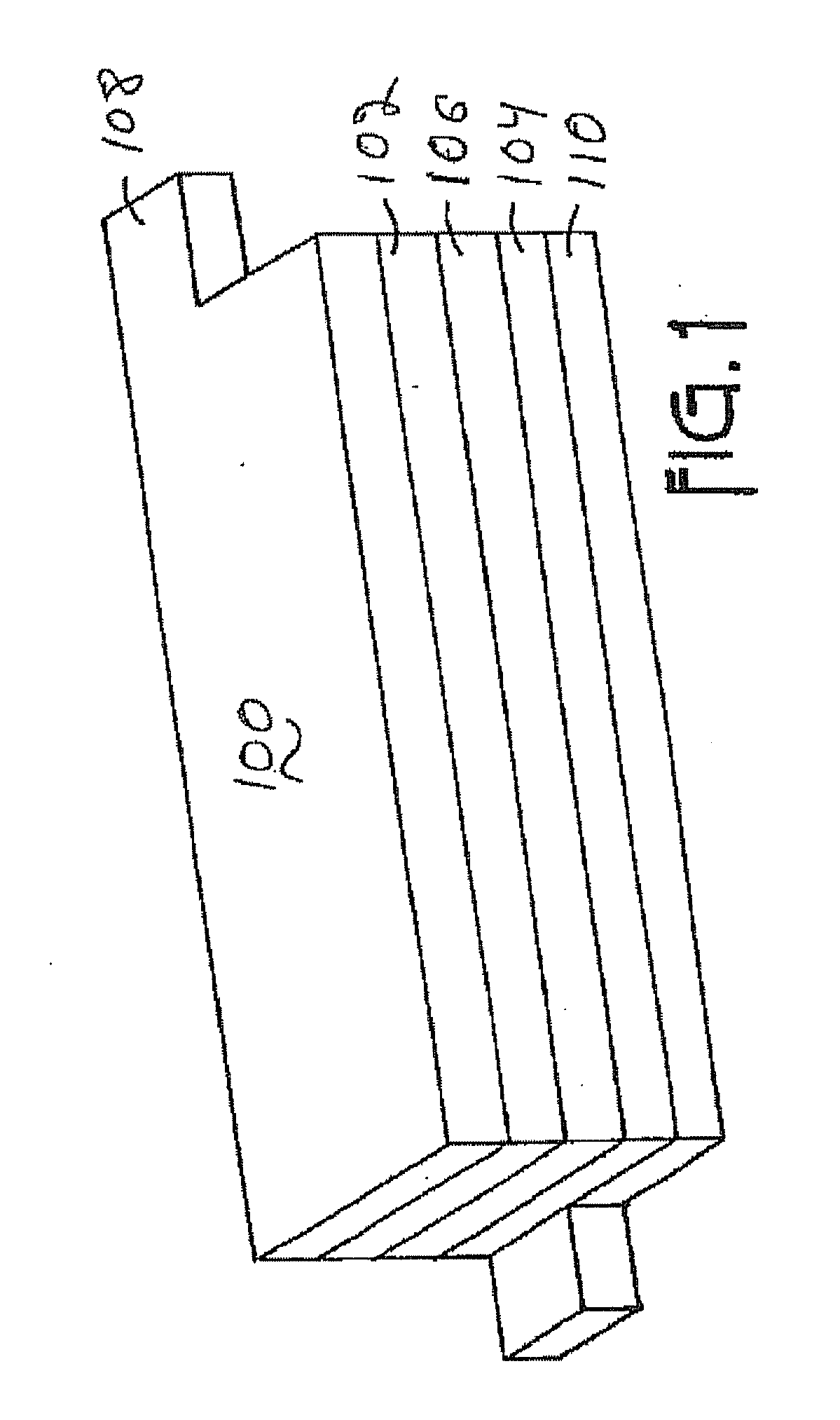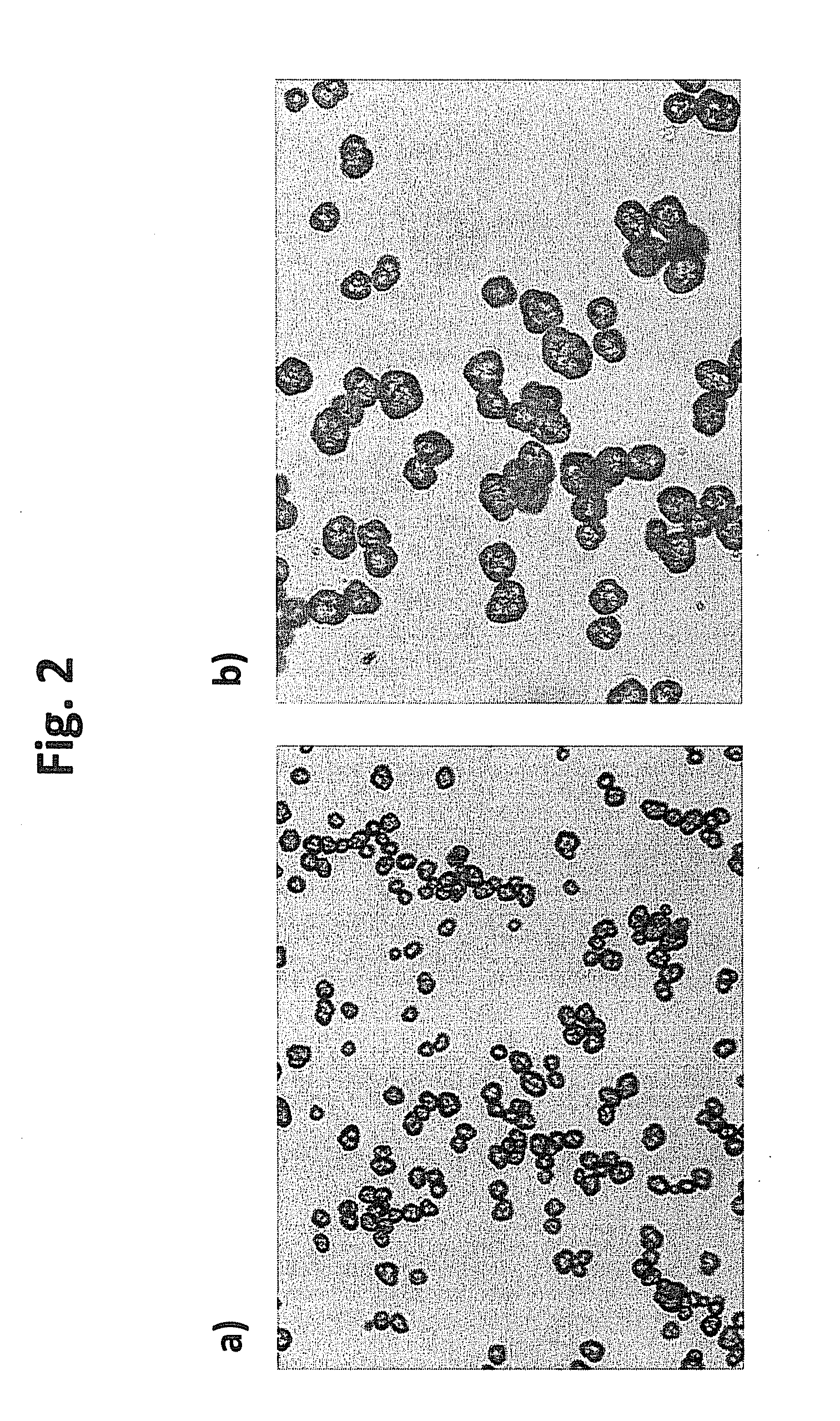Positive electrode materials for high discharge capacity lithium ion batteries
- Summary
- Abstract
- Description
- Claims
- Application Information
AI Technical Summary
Benefits of technology
Problems solved by technology
Method used
Image
Examples
example 1
Reaction of Metal Sulfate with Na2CO3 / NH4OH for Carbonate Co-precipitation
[0066]This example demonstrates the formation of a desired cathode active material using a carbonate co-precipitation process. Stoichiometric amounts of metal sulfates (NiSO4.xH2O, CoSO4.xH2O, & MnSO4.xH2O) were dissolved in distilled water to form a metal sulfate aqueous solution. Separately, an aqueous solution containing Na2CO3 and NH4OH was prepared. For the formation of the samples, the two solutions were gradually added to a reaction vessel to form metal carbonate precipitates. The reaction mixture was stirred, and the temperature of the reaction mixture was kept at a temperature between room temperature and 80° C. The pH of the reaction mixture was in the range from 6-9. In general, the aqueous metal sulfate solution had a concentration from 1M to 3M, and the aqueous Na2CO3 / NH4OH solution had a Na2CO3 concentration of 1M to 4M and a NH40H concentration of 0.2-2M. The metal carbonate precipitate was filt...
example 2
Formation of AlF3 Coated Metal Oxide Materials
[0069]The metal oxide particles prepared in the above example can be coated with a thin layer of aluminum fluoride (AlF3) using a solution-based method. For a selected amount of aluminum fluoride coating, appropriate amount of saturated solution of aluminum nitrate was prepared in an aqueous solvent. The metal oxide particles were then added into the aluminum nitrate solution to form a mixture. The mixture was mixed vigorously for a period of time to homogenize. The length of mixing depends on the volume of the mixture. After homogenization, a stoichiometric amount of ammonium fluoride was added to the homogenized mixture to form aluminum fluoride precipitate while retaining the source of fluorine. Upon the completion of the precipitation, the mixture was stirred at 80° C. for 5 h. The mixture was then filtered and the solid obtained was washed repeatedly to remove any un-reacted materials. The solid was calcined in nitrogen atmosphere a...
example 3
Tap Density Results of Different Metal Oxide Materials
[0072]An AUTOTAP™ machine from Quantachrome Instruments was used to measure tap density of the samples synthesized in examples 1 and 2. In a typical measurement process, a 4 gram quantity of sample powder was weighed out and placed in a graduated cylinder (10 mL). The cylinder was then mounted on a wheel of the AUTOTAP™ that taps at a tap rate of 260 min−1 with a drop height of 3 mm. After 2000 taps the volume of the powder was determined by using the measurement markings on the graduated cylinder. The initial weight of the sample divided by the measured volume after tapping gives the tap density in g / mL unit of the sample. The tap densities of samples prepared as described in Example 1 were measured and the tap densities of 2.0, 2.1 and 2.2 have been obtained. In general, samples with tap density around and above 1.8 g / mL can also have 10th cycle specific capacity around and above 235 mAh / g at 0.33 C. In some embodiments, sample...
PUM
 Login to View More
Login to View More Abstract
Description
Claims
Application Information
 Login to View More
Login to View More - R&D
- Intellectual Property
- Life Sciences
- Materials
- Tech Scout
- Unparalleled Data Quality
- Higher Quality Content
- 60% Fewer Hallucinations
Browse by: Latest US Patents, China's latest patents, Technical Efficacy Thesaurus, Application Domain, Technology Topic, Popular Technical Reports.
© 2025 PatSnap. All rights reserved.Legal|Privacy policy|Modern Slavery Act Transparency Statement|Sitemap|About US| Contact US: help@patsnap.com



